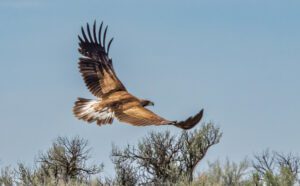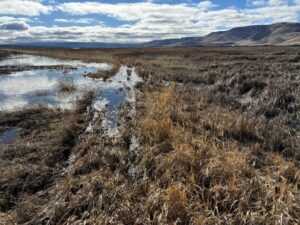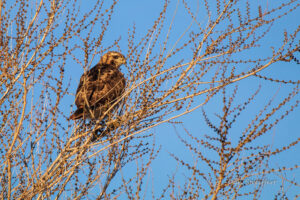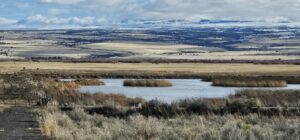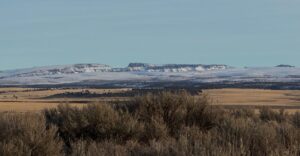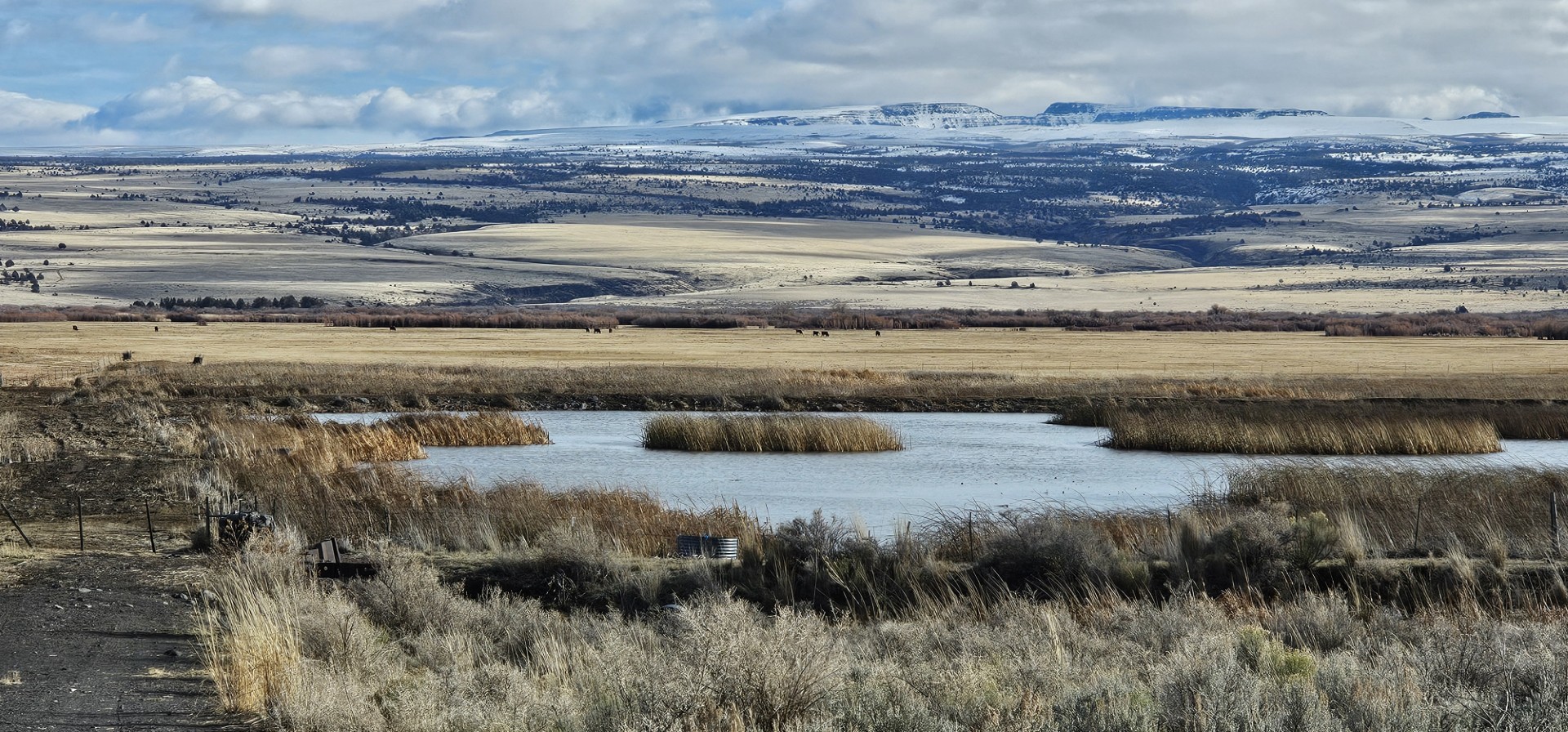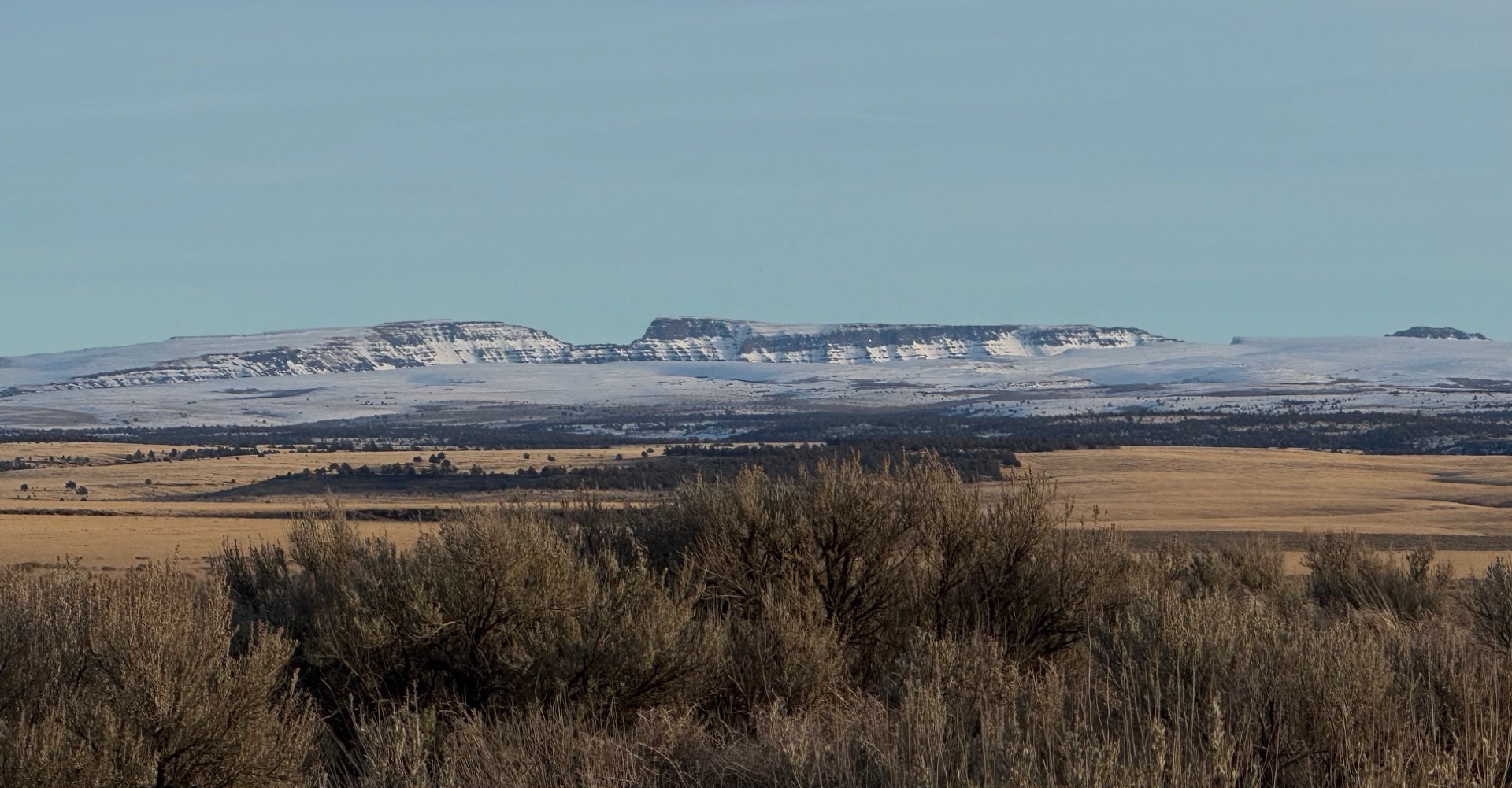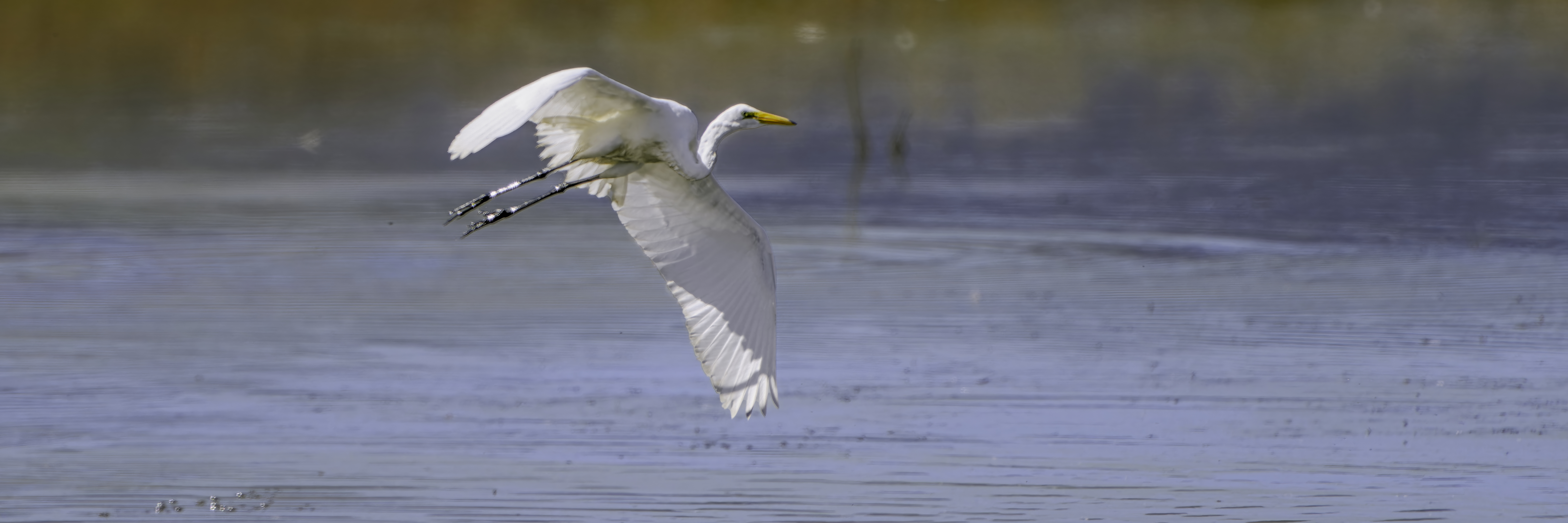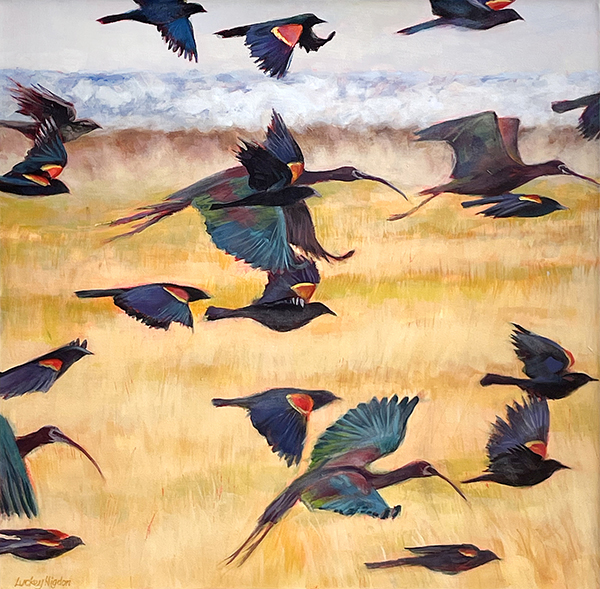When I moved to Wisconsin in 1975, I fell head-over-heels in love with its lush green pastures, rolling hills and woods. Maybe it reminded me of the Western Pennsylvania landscape where I grew up. Aldo Leopold died the year I was born, but he left Wisconsin love letters in the form of essays. In 1999, I moved to Puget Sound and joined the local birding group. People would ask me if I had been to Malheur National Wildlife Refuge in southeast Oregon. It was an incredible birding destination, they said. To me, though, it was an amorphous place in an arid corner of the state. It held no allure.
A few years later I moved to Forest Grove, west of Portland and decided I would use some of my vacation to visit Malheur in late May. As I turned south onto 205 just east of Burns, still 30 miles north of the Refuge, I was surprised to see flooded farm fields with wading birds foraging. Yellow-headed Blackbirds dotted the same fields and wire fencing, scolding me with their screechy, territorial call. A flock of White-faced Ibis flew overhead. Cinnamon Teal, along with other ducks, swam in the ditches on either side of the road. Sandhill Crane pairs walked in the fields a little further south. I was intoxicated. As I drove over Wright’s point, I saw Steens Mountain, the largest fault block mountain in the Great Basin. While the flooded fields around Burns owed their temporary abundance of water to the Silvies River, the Refuge was an oasis in the high desert thanks to the snowmelt from Steens. It took me two hours to drive that 30 miles to the northern edge of the Refuge, simply because I had to stop so often to see birds and take in the varied landscape.
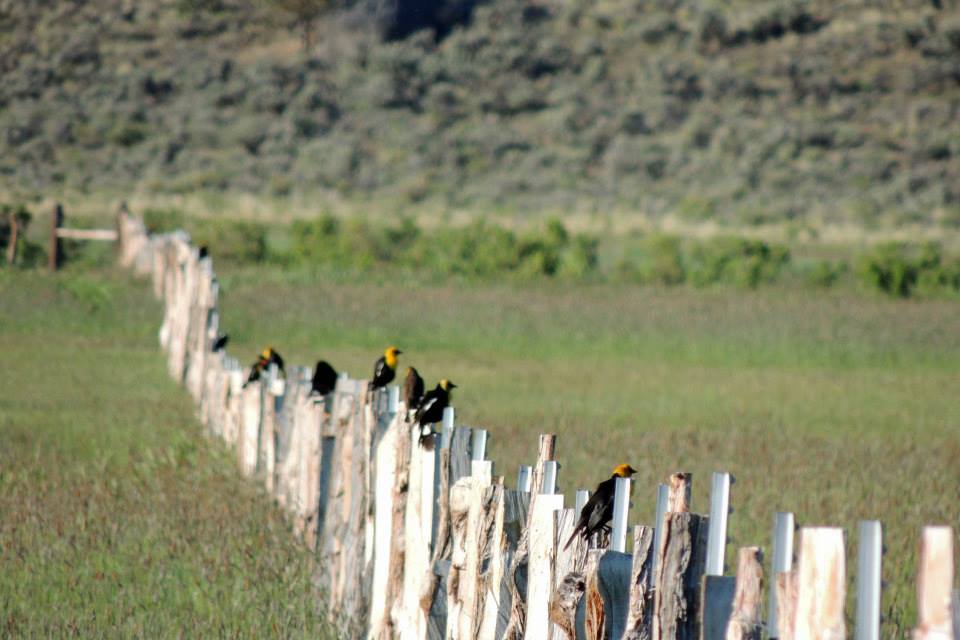

In the years to come, I would spend a week or more camping at Page Springs at the southern end of the refuge where I could wake up each morning ready to explore, slowly making my way to Refuge Headquarters.
On the last day of one trip, I woke up to the sound of Canyon Wrens, their sweet descending calls filling the air as they left their nests in the canyon wall just across a creek from the campground. Soon, I had walked the mile or so to the beginning of the North Steens Loop Road, still closed to cars because of snow even though it was late May. I sat on a large rock about knee high, looking out across the south end of Malheur National Wildlife Refuge. The sun hadn’t begun to peek above the mountain yet, but it was close, casting a pink glow to the desert hills to the southwest. The peace I felt was palpable. Here, I always remembered this land was the home of the Northern Paiutes, even if they’d been relegated to a small reservation north of Burns for over a century. The sun rose above the mountain behind me, and I lingered. Certainly I came here each spring to witness the migration of millions of birds. But it was more than that. Here, I felt the connection to the land so strongly.
Restored, I walked back down to the campground where other campers who had come to watch birds or to fish were stepping out of their tents or RVs. It didn’t take long to put my tent, duffle bag and small cooler in the car. I looked around, satisfied I’d left the site ready for the next visitor and got in my car.
I drove slowly on the gravel road between Page Springs and the paved highway at Frenchglen. There were Western Tanagers, a Bullock’s Oriole, a Wilson’s Snipe. Once out of Frenchglen, the speed limit on 205 increased. Though I would still stop at a few places to see more birds on my way home, I was usually ready to return to the other side of the Cascade range where I lived and a hot shower awaited. This time, though, perhaps my seventh or eighth annual trip to the high desert since moving to Oregon in 2002, there was something welling up inside me just as I came to a pullout. I parked the car and looked out over the wetland. Suddenly I was sobbing. I didn’t know where all the tears and emotion came from. Surely I would be back again. I wiped away the tears and stayed a little longer before getting back on 205.

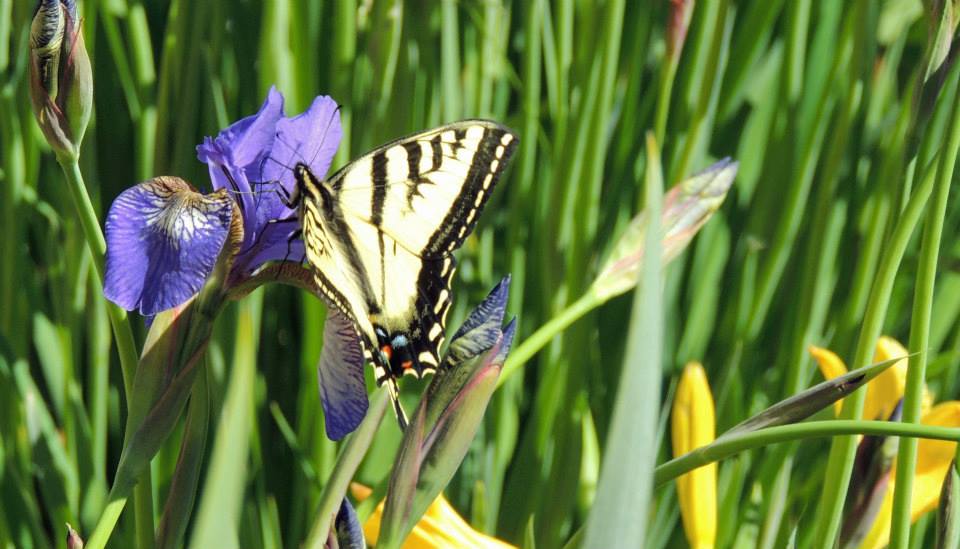
Swallowtail butterfly 
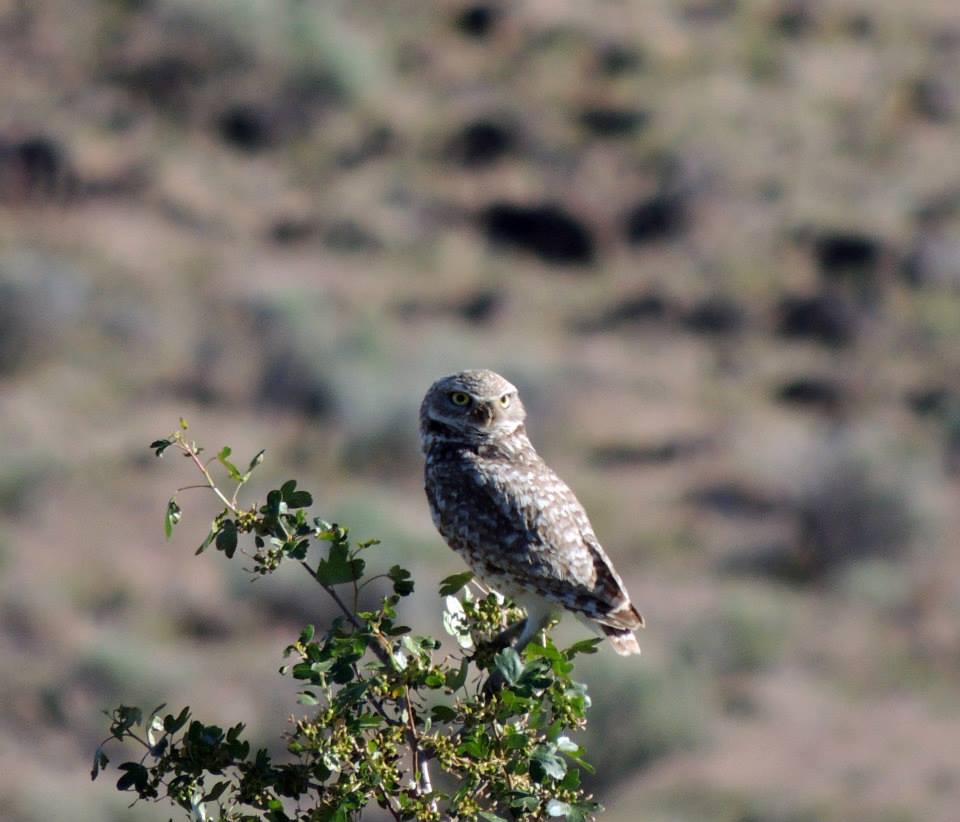
Burrowing Owl 

Bullock’s Oriole 

Bobolink 

Meadow
In the beginning, still working, my trips to Malheur were limited by vacation time that I portioned out with other birding destinations. Later, I would volunteer for weeks and months at a time.
The spring of 2018 was the first migration I missed since moving to Oregon. Instead, I drove to radiation treatments every day. By late July, the treatments were over, and my strength returned. I told my daughter I was going to Malheur. “But Mom, it’s July. There aren’t any birds there now.” But I knew it was as much about place that drew me. And of course there were birds, the ones that had nested, including Bobolinks and their happy song. That fall, I volunteered again, and the following spring as well.
Now I am in Hawaii, with its own magic. Yet I am confident my next trip to the mainland will include a trip to Malheur.
I wish I’d written multiple love essays about Malheur as Leopold had about Wisconsin. I invite you to write yours.


